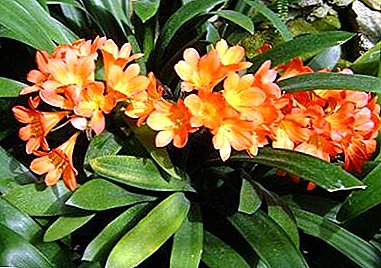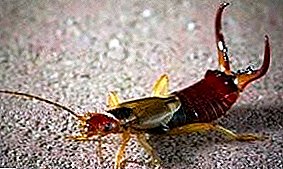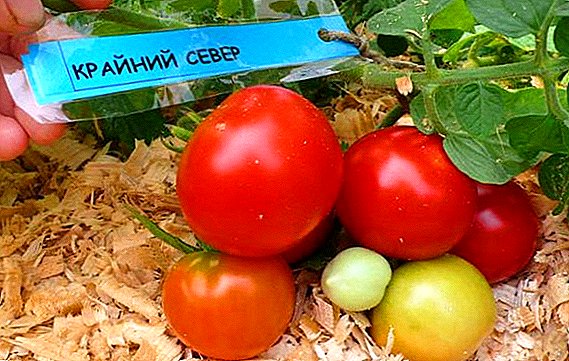 The "Skor" fungicide is a complex chemical product designed to protect fruit and ornamental crops, as well as vegetables from bacterial and fungal pathogens of many diseases that affect these plants.
The "Skor" fungicide is a complex chemical product designed to protect fruit and ornamental crops, as well as vegetables from bacterial and fungal pathogens of many diseases that affect these plants.
"Fast": a description of the drug
 The drug "Skor" has the property to provide sustainable preventive protection and effective treatment of plants and, very importantly, can be used in any phase of their development.
The drug "Skor" has the property to provide sustainable preventive protection and effective treatment of plants and, very importantly, can be used in any phase of their development.
As one of the most well-known fungicides for fruit trees, the drug "Skor" is used to combat scab (especially in apples, pears and other pome and stone fruit), powdery mildew, leaf curl, perforated and brown spotting, blistering, coccomycosis, moniliosis.
In vegetable farming, this drug it helps to cope with late blight, white and brown spots in carrots, tomatoes and potatoes, beetroot churches, and powdery mildew on cucumbers, pumpkin, zucchini, etc.
Fruit shrubs (gooseberries, currants) also often suffer from powdery mildew, which can be controlled with this fungicide. The drug "Skor" is one of the most effective ways for systemic protection of grapes. In particular, the drug prevents and treats such characteristic vine diseases as powdery mildew, black and gray rot, escoriosis, rubella.
In addition to these diseases, "Skor" also applies to protect plants from root rot, leaf rust, mold-forming seeds and many other problems.
The drug can be purchased at a specialty store or ordered online. Is on sale "Skor" in the form of the emulsion concentrate which is packed up in ampoules or bottles.
Active ingredient and mechanism of action
Active ingredient of the drug "Scor" - difenoconazole 250 g / l, belonging to the chemical class of triazoles.
Did you know? Triazole class chemicals in the agrotechnical industry have replaced the more toxic benzimidazoles. Modern triazole fungicides are represented by about four dozen different substances that have a wide range of applications and a unique mechanism of action on plant pathogens, thanks to which all of them currently enjoy tremendous commercial success and sell better than all other fungicides.
 The chemical structure of difenoconazole has several advantages in combating fungal plant diseases compared to other triazole class fungicides.
The chemical structure of difenoconazole has several advantages in combating fungal plant diseases compared to other triazole class fungicides.
So, this substance is capable of being absorbed by all the organs of plants in which the process of photosynthesis takes place.
The mechanism of the effect of the drug "Scor" on pathogens of diseases consists in suppressing their sporulation and, due to this, weakening the subsequent damage to the plant and reducing the intensity of infection.
If you use the "Skor" fungicide correctly, in strict accordance with the instructions for use, it prevents the formation of resistant strains of pathogens.
“Skor” is a preparation for the treatment of plants, the effectiveness of which is manifested provided that such a procedure is carried out at the earliest possible stage of infection - no later than 2-3 days after the infectious agent has entered the plant.
The drug "Scor" is not effective for suppressing the peronosporic fungi (Peronosporales), as well as at the stage of the disease when spores of the causative agent of the disease have already formed on the infected plant.
The spread of fungicide through the vessels of the plant is carried out very quickly. Within two hours after treatment, the drug begins to actively act on the mycelium of the pathogenic fungus, blocking its growth and slightly suppressing the level of sporulation.
The effect of the drug on the seeds during their prophylactic treatment is as follows: the active substance penetrates into the seed, passing through the shell, and is stored in the tissue until it begins to grow, after which it spreads to all the green tissues of the young plant. 
Due to rapid absorption, the effectiveness of the fungicide does not depend on rain and wind, but temperature conditions affect the impact of the effect. Thus, the active substance works best in the temperature range of 14-25 ° C; with significant deviations from these parameters, especially the lower ones, the reaction, respectively, decreases.
In addition to direct protection against pathogenic fungi, the use of "Skora" also allows:
- to increase bushiness by one and a half times, the length of shoots, the number and size of leaves of plants due to the general strengthening of their immunity;
- increase the time of preservation of the green surface of plants, as a result of which photosynthesis processes take place better and longer and, accordingly, increases the yield;
- to accelerate the germination of seeds (for example, for vegetables - on average for two days), as well as to improve their germination;
- increase the shelf life of seeds.
Pathogens of scab and powdery mildew are the most resistant to the effects of the drug during the period of weakening its concentration, therefore plants can be considered protected from this disease only 6-7 days after treatment with Skor for preventive purposes and 4-5 days in the presence of the disease. 
Instructions for use of the drug, how to breed "Skor"
"Fur", like other fungicides for the garden, is effective if you follow clear instructions regarding the procedure and timing of its use, and these rules depend on the disease against which the drug is used, and on the type of plants that are supposed to be processed.
However, there are some general recommendations that apply in all cases. Thus, the solution of the drug "Scor" can not be prepared in advance. Dilution of the drug according to the instructions immediately prior to use.
The amount of fungicide necessary for treating a plant or soaking seeds is first dissolved, thoroughly mixed, in a small amount of warm (about 25 degrees) water, after which the solution of the substance is gradually brought to the required amount by adding the required amount of water.
Further - depending on the task.
Thus, for the treatment of indoor plants (this also applies to spraying and soaking seeds or cuttings), an average of 0.2 to 2 ml of the drug per liter of water is needed. In preparing the solution, it is recommended to use a medical syringe to prevent overdose.  For use in more extensive work, the dosage can not be determined with such pharmacy accuracy, but you still need to remember that an insufficient amount of the drug will reduce its effect and can provoke resistance (addiction), and overdose is dangerous for the plant itself.
For use in more extensive work, the dosage can not be determined with such pharmacy accuracy, but you still need to remember that an insufficient amount of the drug will reduce its effect and can provoke resistance (addiction), and overdose is dangerous for the plant itself.
Trees are treated with a solution of 2 ml of the drug per bucket of water, the consumption per tree is from 2 to 5 liters, depending on the size.
Vegetables (potatoes, tomatoes) are treated with a solution of 1 ml of the drug per 1 liter of water, consumption is a maximum of 1 l per plant.
The use of the drug, as was said, can be adjusted depending on the type of disease against which it is directed, in particular:
- powdery mildew, scab, leaf curl, blast, coccomycosis: 2 ml are diluted in a bucket of water,
- to get rid of Alternaria, 3.5 ml of the preparation is taken into a bucket of water, 4 ml from gray rot;
- White, brown, black and other spots require an even more concentrated solution to be treated (5 ml per bucket of water).
 The number of treatments also depends on the type of culture and the disease.
The number of treatments also depends on the type of culture and the disease.Vegetables, as a rule, are treated no more than two times (the exception is powdery mildew and alternariosis, where the third spraying is allowed), fruit trees - no more than three times.
In severe cases, four treatments are possible, but this is the maximum number. In any case, the last spraying can be done no later than three weeks before picking the fruit.
Important! The increase in the number of treatments, as well as the wrong concentration of the drug can trigger the formation of resistant strains of pathogens. Therefore, if the number of treatments provided by the instructions did not lead to a positive result, the use of the drug should be discontinued, replacing it with another fungicide of a necessarily different chemical group differing in the mechanism of action.
If spraying is carried out for preventive purposes, it is enough to do it twice - before flowering (at the time of bud formation) and after flowering.
The interval between sprays as a prophylactic measure is 10-12 days, in the phase of the disease - reduced to 8 days.
The drug "Scor" is, as mentioned, a broad-acting fungicide, but there are special instructions for its use on grapes. Among the systemic fungicides for grapes, "Skor" is used to treat various diseases, but it is especially effective for combating powdery mildew (oidium). 
The first treatment with fungicides for grapes is made immediately after the appearance of the first signs of the disease, either at the end of the first incubation period of the disease, or, for prophylactic purposes, after the vine has grown about 20 cm.
The second, control treatment is aimed at prevention and takes place about a week before the start of active flowering (at the time of bud formation).
The third treatment protects future berries, it is carried out immediately after the end of flowering. If the vine is afflicted with a disease, another treatment is carried out at the moment the clusters close.
For the treatment of grapes from powdery mildew the drug "Skor" diluted in a concentration of 5 ml per bucket (10 l) of water.
To prevent the drug from losing its chemical activity, it must be stored in a dry, dark and cool room. Before opening the package, the shelf life is three years, but when the container is printed, it must be used until the end of the season, while maintaining the highest possible tightness.
Compatibility "Skora" with other drugs
 The drug "Scor" is generally compatible with the vast majority of pesticides (fungicides, insecticides, acaricides) used in agriculture.
The drug "Scor" is generally compatible with the vast majority of pesticides (fungicides, insecticides, acaricides) used in agriculture.
However, in order to avoid an undesirable effect, the interaction of the active substance with other compounds is better clarified in advance, referring to the instructions.
To increase the effectiveness of exposure and to avoid resistance, “Skor” can be mixed with contact fungicides and combined with other chemicals used against diseases and pests (for example, Topaz, Decis-Extra, Karate, Summi-Alpha, Falcon, etc.).
Important! The drug "Skor" can not be mixed with chemicals that have an alkaline reaction.
Mixing the prepared “Scor” solution with a soapy substance to improve the duration of contact with the plant is allowed, but not required, since this drug is well retained on the leaves and without additional support.
"Skor": the advantages and disadvantages of using fungicide
The drug "Skor" deserved a huge amount of positive feedback in the fight against diseases such as scab, powdery mildew, spotting, etc. 
In particular, among the advantages of the drug over other fungicides are the following:
- able to penetrate all green plant tissue;
- acts independently of precipitation and wind;
- has additional properties, in addition to treatment (keeps leaves green for a longer period, increases yield, improves seed storage time and their germination);
- causes relatively low, compared with other drugs, resistance in pathogens;
- is of low toxicity, does not harm the environment and is practically not dangerous to humans;
- provides the highest, in comparison with other triazoles, effect in the protection of fruit trees from the most dangerous diseases;
- can be used in all phases of plant development, except for the moment of harvest;
- convenient to use.

However, many gardeners have noted some drawbacks of the drug. Among them are:
- rather high, in comparison with other drugs, concentrate consumption at a high cost;
- relatively long waiting time (approximately 20 days);
- inefficiency against rust fungi;
- observed in recent years, an increase in resistance to its active substance of the powdery mildew causative agent;
- decrease in efficiency at lower temperatures;
- in relation to phytosporosis and brown spot on potatoes, other drugs with the same active ingredient, but with a shorter waiting time, are more effective;
- inconvenient packaging: at the bottom of the ampoule there always remains some amount of concentrate that has to be thrown away simply because it cannot be removed.
Did you know? In order to fully use the contents of the ampoule, you can carefully cut it with a knife on both sides and throw it into the container in which the Scor solution is diluted - water will wash the remaining concentrate from the ampoule
Safety measures when using the drug
The drug "Skor" is not a strong poison. It does not irritate the mucous membranes of the eyes, does not burn the skin, does not adversely affect the psyche. 
Special precautions use of the drug does not require, but still spraying should be carried out in protective gloves and a mask (respirator). So that the drug does not settle on the hair, you must also wear a hat.
You can not combine work with the drug with eating and smoking. If the active substance enters the oral cavity, it is necessary to carry out an independent gastric lavage, and then contact a medical institution.
It is not dangerous for birds, earthworms, bees, predatory mites and other entomophages. However, this drug is a toxic substance for fish, so you should refrain from getting its remains in water bodies, and in the sanitary zone of fish farms use with extreme caution.
In general, it can be said that the moderate phytotoxicity of the drug “Skor” does not manifest itself if we follow the recommendations of the manufacturer and exercise reasonable caution.












